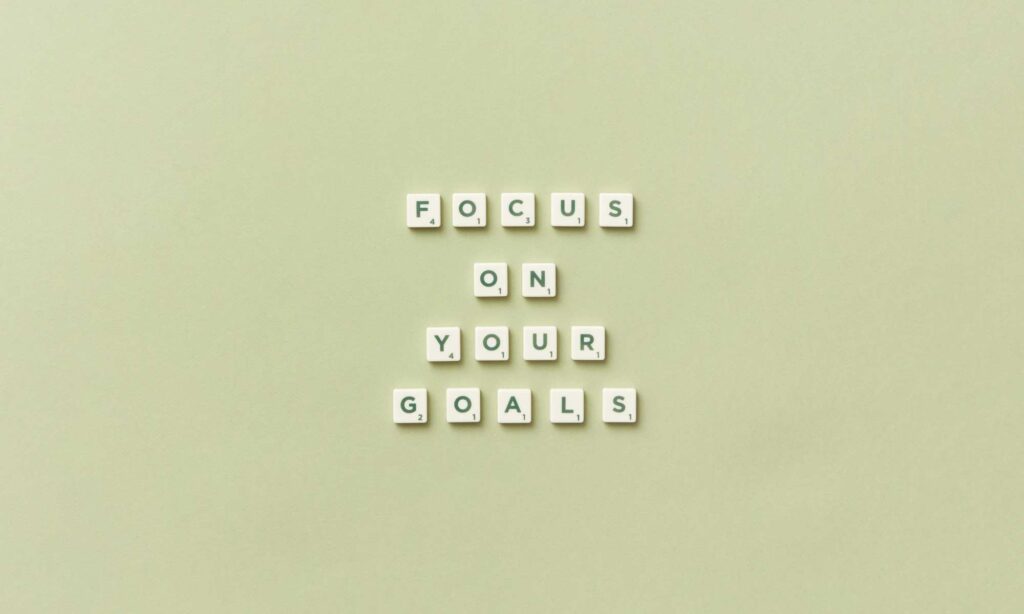10 Proven Steps to Set Goals and Achieve Them Fast – A Complete Guide to Goal-Setting Success

Table of Contents
Setting goals is a powerful first step toward turning your vision into reality. Whether you want to advance your career, improve your health, grow financially, or learn a new skill, the process of goal setting provides the structure you need to succeed. But not everyone knows how to set goals and achieve them effectively. In fact, many goals go unaccomplished not because of a lack of motivation, but because they were poorly planned or unrealistic from the start.
Understanding how to set goals can dramatically improve your productivity, focus, and long-term satisfaction. In this in-depth guide, we’ll explore the psychology behind goal setting, walk you through a 10-step method to reach your goals, and show you how to implement a 90-day plan to make things happen fast.

What is Goal Setting and Why Does It Matter?
Goal setting is the structured process of identifying what you want to accomplish and mapping out the measurable steps to get there. When done effectively, it sharpens your focus, boosts motivation, and gives you control over your future. Goals help you:
- Create direction: They provide a clear path forward.
- Visualise success: You move from “what if” to “what’s next.”
- Track progress: They help you monitor results and pivot if needed.
- Stay accountable: Written goals increase your commitment to action.
Goal setting is more than just making a wish list. It’s a deliberate, structured process where you decide what you want to achieve and outline the steps to make it happen. It involves choosing a specific objective, breaking it down into manageable parts, and working consistently toward it over time.
This process forces clarity. By defining your goals in measurable terms, you automatically filter out distractions and focus only on what truly matters. Without clear goals, you’re more likely to drift aimlessly, react to external pressures, or lose sight of your true priorities.
Moreover, when you learn how to set goals, you gain control over your time, energy, and direction. Goals provide a roadmap. They give your days meaning and purpose, transforming your hopes into action and your dreams into accomplishments.
What are Goals?
Let’s clear up a common confusion: not everything we want to do is a “goal.” Here’s how to differentiate:
- A Goal is the destination. It’s the big picture result you want.
- An Objective is a specific, short-term, measurable action or step you take to reach the goal.
- A Resolution is more like a promise or intention, usually without a clear path.
- A Mission is your broader life or company purpose.
For instance:
- Goal: Become a confident public speaker.
- Objective: Join Toastmasters and practice speaking twice a week for 3 months.
- Resolution: I want to speak more in public this year.
- Mission: To inspire and educate others through communication.
True goals are time-bound, often larger in scale, and grounded in personal or professional vision. You don’t just “want” something – you plan for it, work for it, and track it until you get it.

Understanding the Different Types of Goals
Before diving into strategy, it’s important to understand the various types of goals you can set. Each serves a different purpose and requires a unique approach.
1. Short-term Goals
These are objectives you can accomplish in the near future – typically within a few days, weeks, or months. Examples include finishing a book, applying for a new job, or improving your sleep schedule.
2. Long-term Goals
These are bigger aspirations that take a longer time to accomplish, usually several months or even years. Examples include earning a degree, starting a business, or saving for retirement. Understanding how to set goals over the long haul requires patience, perseverance, and proper planning.
3. Personal Goals
These focus on individual growth and well-being. They may include improving your mental health, cultivating relationships, or pursuing hobbies.
4. Professional Goals
These are career-oriented objectives such as landing a promotion, learning a new job skill, or expanding your professional network.
5. Financial Goals
Examples include paying off debt, saving for a home, or building an emergency fund. Financial goals often require discipline and consistency.
6. Academic Goals
These are common for students and lifelong learners. They could involve achieving a certain GPA, mastering a subject, or completing a certification course.
7. Social Goals
These involve your interactions with others and might include networking, enhancing communication skills, or being more active in your community.
By identifying what kind of goal you’re working toward, you can tailor your strategy and stay more focused. For easier understanding, here’s an overview with types and examples:
| Goal Type | Examples |
| Short-term Goals | Daily tasks, weekly habits |
| Long-term Goals | Career advancement, long-term fitness |
| Personal Goals | Self-care, travel, relationships |
| Professional Goals | Promotions, new skills, team achievements |
| Academic Goals | Better grades, degrees, certifications |
| Financial Goals | Savings, debt repayment, investments |
| Social Goals | Networking, friendships, community roles |

Step-by-Step: How to Set Goals and Achieve Them
1. Visualise Success
Visualisation is a mental practice where you clearly imagine yourself achieving your goal. It’s not just about seeing the end result – it’s about experiencing it in your mind. For instance, if your goal is to run a marathon, visualise the finish line, the cheering crowd, and your own sense of triumph. This activates the same neural networks used during actual performance, making the experience more real and attainable.
Visualisation builds emotional commitment. When you fully imagine what success looks and feels like, your desire to work toward it increases significantly. This process is crucial when learning how to set goals, as it connects your vision with your daily actions.
2. Set SMART Goals
The SMART framework helps you clarify and define your goals. Here’s how it breaks down:
- Specific: “Get in shape” is vague. “Lose 10 pounds in 3 months by exercising 4 times a week and tracking meals” is specific.
- Measurable: Set clear metrics. If you can’t measure your goal, you can’t manage your progress.
- Achievable: Your goal should stretch you, but it must also be within reach given your current resources.
- Relevant: Align your goal with your values and long-term objectives.
- Time-bound: A deadline creates urgency and prevents procrastination.
Applying the SMART method ensures your goals are well-structured and easier to accomplish. That’s why I applied it in my 90-day daily planner.
Example: “Increase customer satisfaction by 15% in the next two quarters by revamping feedback processes.”

3. Write Down Your Goals
Studies show that those who write down their goals are 42% more likely to achieve them. Writing gives your goals form. It shifts them from abstract thoughts to concrete targets. Plus, a written goal acts as a daily reminder, reinforcing commitment and focus.
Place your written goals where you’ll see them often – your journal, your desk, or your phone lock screen. This simple habit strengthens your resolve and builds momentum.
4. Build a Goal Ladder (Action Plan)
Big goals can feel overwhelming. The solution? Break them into smaller steps. Think of each step as a “rung” on a ladder, leading to your final goal. This approach turns massive aspirations into achievable daily tasks, which makes progress feel more manageable and measurable.
Each rung should have an associated timeline and a clear objective. For example, if your goal is to launch a podcast, your ladder might include: buying a microphone, choosing a format, recording your first episode, and promoting it on social media.
5. Create a Timeline with Deadlines
Timeframes bring accountability. Without them, you’re more likely to delay or abandon your goals. A timeline not only adds structure but also helps you prioritise tasks effectively. Break long-term goals into monthly and weekly plans, with deadlines for each step.
Let’s say your goal is to launch a website in 90 days. Your timeline might look like:
- Week 1–2: Choose platform and domain
- Week 3–4: Design layout
- Week 5–6: Create content
- Week 7–8: Optimise for SEO
- Week 9: Test and refine
- Week 10: Launch
Use tools like Google Calendar, Trello, or Notion to stay organised – or of course my daily planner, which I created for exactly this purpose. 🙂
6. Anticipate Obstacles
Every goal comes with challenges. Expect them, and plan for them. List out potential barriers – time constraints, lack of support, limited knowledge – and brainstorm ways to overcome them.
For example, if you anticipate time constraints, consider time-blocking techniques. If self-doubt is an issue, build a routine of daily affirmations or journaling.
When you prepare for the worst, you’re less likely to be thrown off course.

7. Find an Accountability Partner
Having someone to check in with boosts your chances of success. This could be a friend, mentor, coach, or online group. Share your goal, update them regularly, and ask for feedback.
Accountability keeps you honest. It helps you maintain discipline, especially on days when motivation is low. Plus, it adds a social element to your journey, making it more enjoyable.
8. Implement a 90-Day Plan
A 90-day plan is a focused framework where you commit to achieving specific goals in a 3-month window. This time frame is long enough to see real progress but short enough to maintain intensity and avoid burnout.
Steps to create your 90-day plan:
- Define 2–3 major goals using the SMART framework.
- Break them into weekly tasks.
- Schedule milestones at 30, 60, and 90 days.
- Review progress weekly.
- Adjust if needed.
A 90-day plan keeps you proactive and results-driven. It’s one of the most effective tools for mastering how to set goals and achieve them consistently.
9. Reflect and Adjust as Needed
Life happens. Things change. Flexibility is key. Regularly reflect on your progress – what’s working, what isn’t, and what needs adjustment.
Create a habit of weekly or monthly reviews. Use a journal to track wins, challenges, and ideas. This reflection will help you learn from experience and improve your goal-setting strategy over time.
10. Celebrate Milestones
Acknowledging your progress boosts morale and reinforces positive behaviour. Don’t wait until the end – celebrate small wins along the way. This can be as simple as a treat, a break, or sharing your success with friends.
Celebration fuels motivation. It reminds you why you started and gives you the energy to keep going.
Goal-Setting Theory: The Psychology Behind Success
Goal-setting isn’t just a productivity hack – it’s backed by real psychological theory. Developed by psychologists Edwin Locke and Gary Latham, goal-setting theory explains how goals influence human behaviour and performance.
Here are the five core principles behind it:
- Clarity – The more specific and clear a goal is, the easier it is to understand what’s required.
- Challenge – Difficult goals are more motivating than easy ones (as long as they’re still achievable).
- Commitment – The more committed you are to your goal, the harder you’ll work to achieve it.
- Feedback – Regular check-ins help you course-correct and stay on target.
- Task Complexity – Breaking down complex goals into smaller steps keeps you from getting overwhelmed.
Understanding these principles helps you design goals that aren’t just inspiring but actually effective. For example, if you’ve ever felt stuck halfway to a goal, chances are one of these five elements was missing.
When you set a challenging but clear goal, your brain becomes laser-focused. Your motivation kicks in, and every small win releases dopamine, giving you that satisfying “I’m crushing it” feeling.
How Goals Influence Behaviour
Ever noticed how having a goal – even a small one – can change your whole mindset? That’s because goals provide structure. They act like mental anchors that keep you grounded and focused. Instead of bouncing from task to task, you start aligning your actions with your desired outcome.
When you set a goal to run a marathon, for example, you start choosing healthier foods, waking up early to train, and saying no to late-night outings. Your daily habits begin to reflect your long-term ambition. That’s the power of goal-directed behaviour.
Also, goals give you emotional rewards. Progress boosts your mood. Achievement gives you pride. Even facing obstacles teaches you resilience. It’s like exercising a mental muscle – the more you work it, the stronger and more disciplined you become.
Plus, when your goals are tied to your values (like becoming a more present parent, or finally launching that dream business), you don’t just want to achieve them – you feel driven to. And that kind of motivation is golden.
Book Recommendations for Goal Setting
As usual, I can’t leave you hanging without some more in-depth reading material.
This bestseller is a masterclass in how small, consistent changes compound into remarkable results. James Clear shows how habits and goal-setting go hand-in-hand, making it a must-read for anyone serious about long-term success.
The Art of Setting Smart Goals, by Anisa Marku
An excellent guide for beginners and experienced goal-setters alike, this book breaks down the SMART goal framework into actionable steps. It’s concise, clear, and perfect for turning vague aspirations into measurable achievements.
The Desire Map, by Danielle LaPorte
This book flips traditional goal-setting by starting with how you want to feel, then setting goals to match. It’s ideal for those seeking more alignment, intuition, and emotional fulfilment in their pursuits.
Your Best Year Ever: A 5-Step Plan for Achieving Your Most Important Goals, by Michael Hyatt
A practical 5-step plan for setting and achieving meaningful goals. Hyatt combines personal stories, research, and productivity tips to help you design your most successful year yet.
Goals!: How to Get Everything You Want – Faster Than You Ever Thought Possible, by Brian Tracy
A no-nonsense, motivational guide that dives deep into goal-setting theory and execution. Tracy provides tools and exercises to help you gain clarity, set priorities, and take action immediately.
Keller teaches the power of focus, helping readers identify the single most important task that will make everything else easier. A great read for those overwhelmed by too many goals or distractions.
Smarter Faster Better, by Charles Duhigg
Combining research and storytelling, Duhigg explores the science behind productivity and motivation. It’s especially helpful for understanding the mental habits that support effective goal-setting and execution.
The 5 AM Club, by Robin Sharma
One of my personal favourites! Robin Sharma advocates starting your day early to build discipline and clarity. This book is a motivational push for anyone wanting to align their lifestyle with their goals and take charge of their mornings.
Awaken The Giant Within, by Tony Robbins
Packed with mindset-shifting strategies, this classic helps readers take control of their emotions, finances, and life direction. Robbins’ goal-setting techniques are empowering and deeply transformative.
The 7 Habits of Highly Effective People, by Stephen R. Covey
A timeless personal development guide that lays a strong foundation for purposeful living. Covey’s principles align perfectly with meaningful goal-setting and long-term growth.
Think And Grow Rich, by Napoleon Hill
One of the original mindset and success classics, this book explores how desire, belief, and persistence influence achievement. A must-read for understanding the mental discipline behind goal attainment.
Disclaimer: As an Amazon Associate I earn from qualifying purchases.

Final Thoughts: Mastering How to Set Goals
Setting goals is not just about dreaming big – it’s about creating a roadmap to achieve those dreams. When you understand how to set goals effectively, you empower yourself to live a life of purpose and direction.
From visualisation to SMART goals, action plans to 90-day strategies, every tool discussed here brings you one step closer to your ideal future. Remember, success is not a stroke of luck – it’s a result of clarity, planning, and consistent effort.
So grab a notebook, define your goals, and take the first step today. The future you want is waiting.







